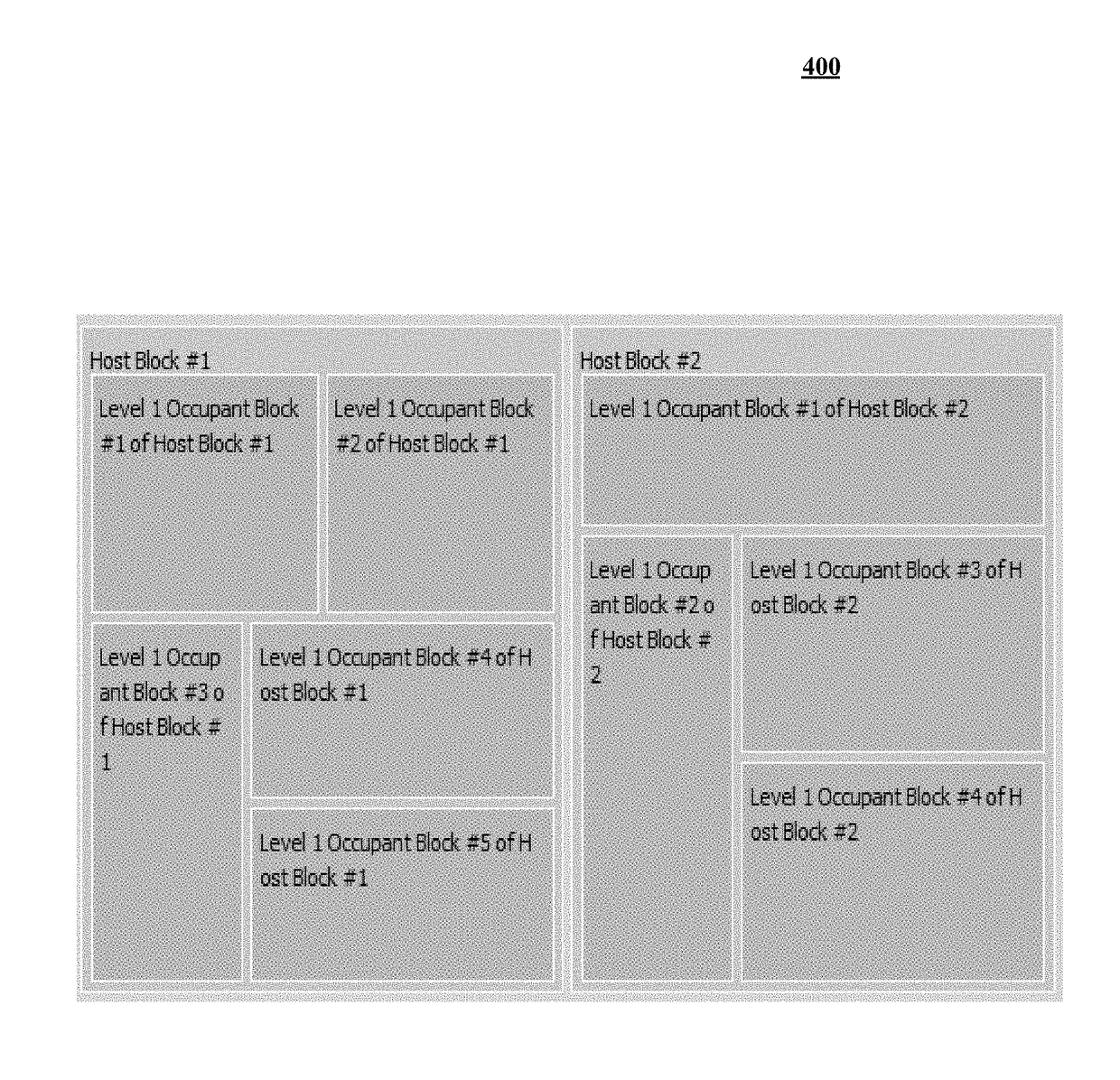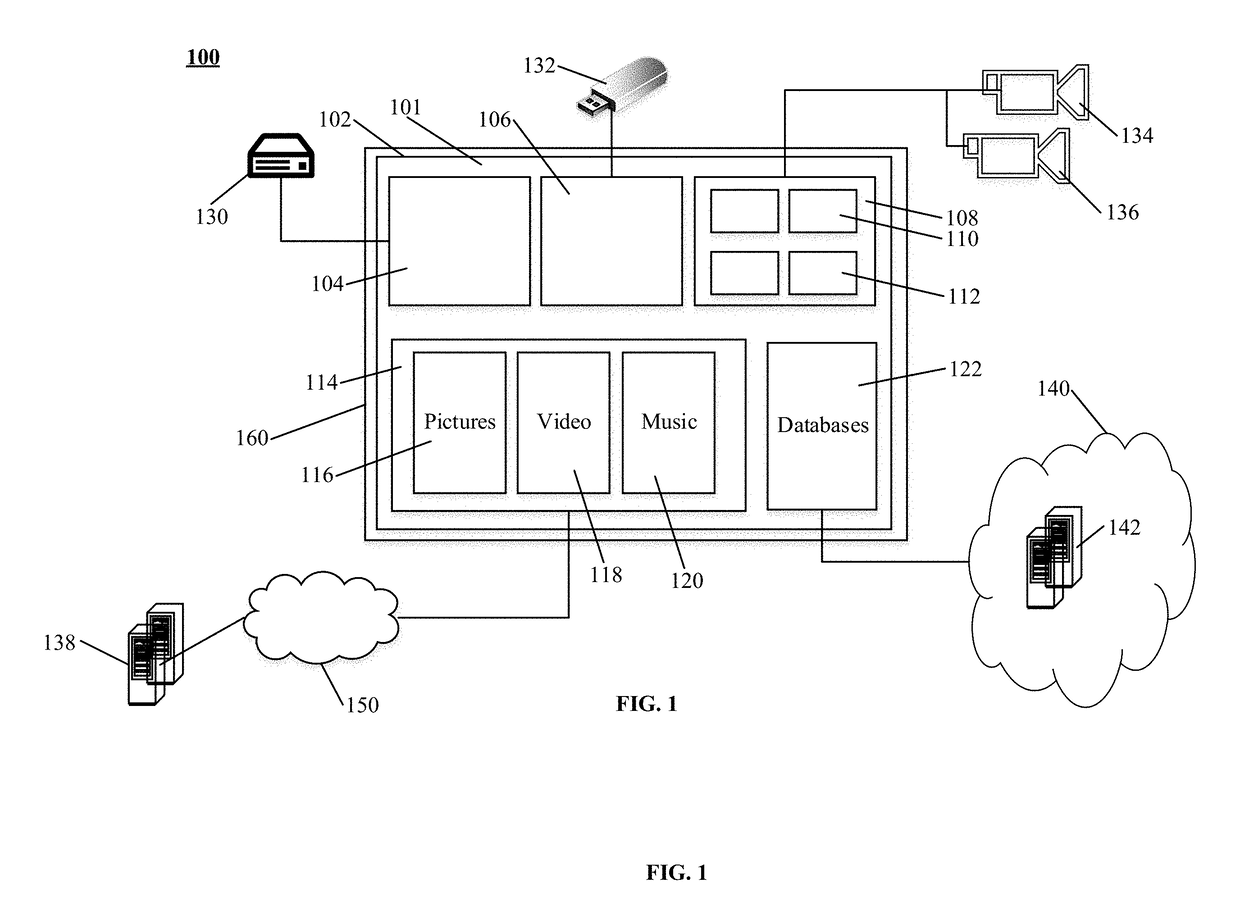System and method for organizing and presenting data using zooming user interface blocks
a user interface and data technology, applied in the field of computer system and method for organizing data and presenting data, can solve the problems of inability to work with files according to the content of files, limited ability to work with files according to files content, and long search and navigation through files and folders, etc., to achieve efficient organization of information
- Summary
- Abstract
- Description
- Claims
- Application Information
AI Technical Summary
Benefits of technology
Problems solved by technology
Method used
Image
Examples
Embodiment Construction
[0047]Turning to the Figures and to FIG. 1 in particular, a system for efficiently organizing data in blocks that are navigated through a zooming user interface is shown and generally indicated at 100. The illustrative system 100 includes a zooming user interface 102 displayed on a computer 160, which can be a desktop computer, a laptop computer, a tablet computer, a smartphone, cloud computers, servers, etc. The ZUI 102 includes multiple ZUI blocks 101, 104, 106, 108, 110, 112, 114, 116, 118, 120 and 122. The ZUI block 101 is the anchor to the ZUI blocks 104,106,108,114 and 122. The ZUI blocks 104, 106, 108, 114 and 122 are said to be occupants of the ZUI block 101. The ZUI block 108 is the anchor of its occupants 110 and 112. The ZUI block 114 is the anchor of its occupants 116,118 and 120.
[0048]The ZUI blocks are nested at multiple levels without limitations. Each ZUI block presents data from a source. For example, the ZUI block 104 displays captured data from a local storage dis...
PUM
 Login to View More
Login to View More Abstract
Description
Claims
Application Information
 Login to View More
Login to View More - R&D
- Intellectual Property
- Life Sciences
- Materials
- Tech Scout
- Unparalleled Data Quality
- Higher Quality Content
- 60% Fewer Hallucinations
Browse by: Latest US Patents, China's latest patents, Technical Efficacy Thesaurus, Application Domain, Technology Topic, Popular Technical Reports.
© 2025 PatSnap. All rights reserved.Legal|Privacy policy|Modern Slavery Act Transparency Statement|Sitemap|About US| Contact US: help@patsnap.com



